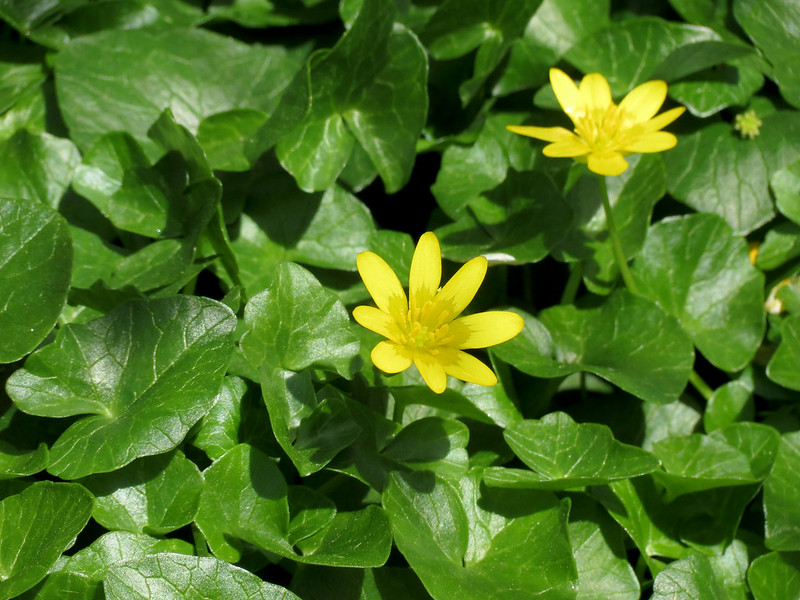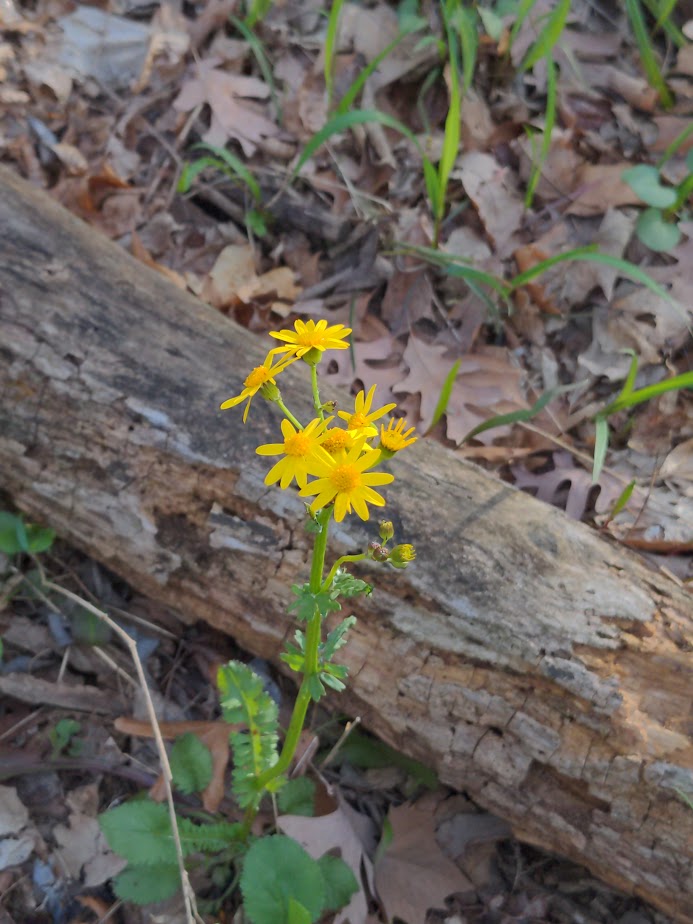Recently I’d been a bit disheartened hiking in some natural wooded areas near my house and seeing invasive bush honeysuckle and lesser celandine taking over and suppressing everything else including the spring ephemerals I love to see at this time of year.
One Dayton-area Metropark I enjoy visiting is Wegerzyn Gardens just to the north of downtown on the Stillwater River. Its beautiful formal gardens are complemented by a wonderful display of woodland wildflowers on the hiking trail that also winds through a swamp forest. Unfortunately, this wooded area was hit hard by the Memorial Day Tornadoes in 2019, which destroyed hundreds of trees including “some of the oldest native trees in our area.”
It seems that lesser celandine (ficaria verna) was a big winner of the disturbance, as much of my woodland hike farther away from the gardens revealed a thick mat of the waxy green foliage with mini yellow flowers, which were all in bloom during my hike.

From what I’ve read (and experienced first-hand trying to remove it from my yard!) lesser celandine is an incredibly difficult species to eradicate as its leaves are somewhat resistant to herbicide and it grows from a bulb which will sprout back up if it isn’t completely dug and removed. Reforesting these battered woods while keeping invasives at bay seems like a herculean task for the Metroparks, which reminds me how important it is to donate to the organization.
Soon after, I had an enjoyable walk at Cox Arboretum which was a much different experience. Instead of mats of the dreaded lesser celandine everywhere, I was happy to view many of my favorite spring-blooming wildflowers.
Pictured below are ragwort (packera), virginia bluebells (Mertensia virginica) and phlox.



These experiences made me wonder what park systems are doing to combat invasive species. In my research, I learned that lesser celandine is far from a new adversary in Dayton; a 2011 Metroparks publication reported that “the team has been spraying patches of lesser celandine, and has been conducting research plots to study the effectiveness of different treatments.”
The article also made a useful observation that can be a hindrance to action: “Invasive species, especially plants, can actually be attractive. The bright yellow blooms of Lesser Celandine that cover many of our streambanks might make you question whether it’s really all that harmful. “What’s important to realize is that while it may look pretty it has choked out native plants as well as the many creatures, from tiny insects to large mammals and birds that rely on those native plants as a food source or home.”
I also learned about some larger nature restoration projects that the park district has completed near Wegerzyn over the past few years. These included a 22-acre parcel protecting critical headwaters along the Stillwater River between Wegerzyn and Englewood MetroPark, where invasive species were removed and 500 native trees and shrubs planted; a restoration of 42 riparian acres along the Stillwater between Wegerzyn and Island MetroPark, which removed invasive honeysuckle and also planted native trees; and the Anderson Chinquapin overlook project at Wegerzyn Gardens itself which “remove(d) dilapidated buildings and plant(ed) native shrubs and prairie species on this land that protects open space, including an old Chinquapin oak, and improves wildlife corridors.”
Hopefully grants will keep helping the park district implement large-scale projects like this to keep invasives at bay and allow biodiversity to flourish in our woodlands.
Leave a Reply